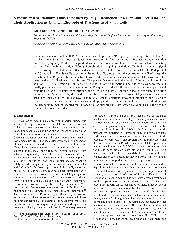摘要
Platinum precursors such as H(2)PtCl(6) call be reduced to platinum (Pt) by polyols at temperatures below 200 degrees C. This method was developed to deposit nanostructured Pt films Oil various substrates through a solution process. High-quality Pt Films with good adhesion to Substrate were obtained oil Substrates like conducting polymer films, indium fill oxide (ITO), and polyimide by dropping a Solution of H(2)PtCl(6) in ethylene glycol (EG). Two types Of Pt Structures, that is, dense and porous Pt structures, were observed for the Pt deposited by EG reduction. The dense Pt Structure is the result of Pt growth from the Substrate immediately after the reduction. This Pt growth from the substrate call produce a continuous nanostructured Pt film with metallic luster and good adhesion to the substrate. The porous Pt Structure is the result of the nucleation of Pt in solution. The Pt nucleation in solution gives rise to Pt particle formation. These Pt particles aggregate and finally precipitate as porous Pt Oil the dense Pt. The quality of the Pt film was affected by the experimental conditions, Such as substrate, concentration, and pH value of H(2)PtCl(6) solution in EG, and temperature during the reduction. Pt deposited by this method Could be used as the counter electrode of high-performance dye-sensitized solar cells (DSCs). The DSCs exhibited a light-to-electricity conversion efficiency of 8.1%, quite close to that of the DSCs with Pt counter electrode prepared by the conventional pyrolysis. In addition, this low-temperature method enabled the Pt deposition on flexible substrate, which Could be used as the flexible counter electrode for DSCs.
- 出版日期2010-3-11
